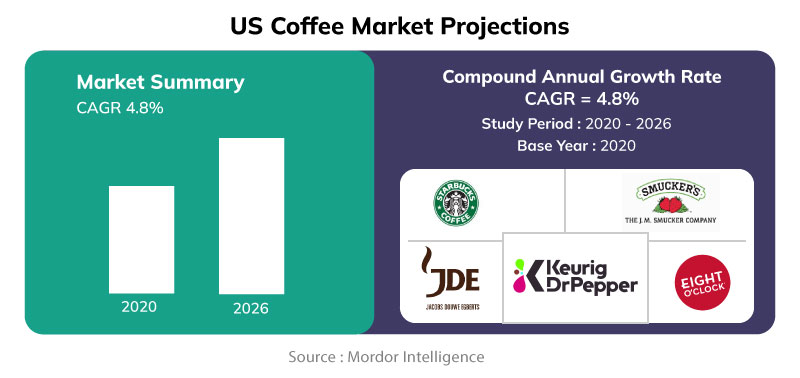Starbucks Overview
Starbucks is a retailer of coffee and snacks with its headquarters in the US. It offers various products that include hot and cold beverages, bagels, cookies, and packaged coffee beans among other products (Starbucks, 2022). The company operates in 80 countries and has more than 33,000 stores worldwide serving over 100 million customers (Starbucks, 2022). The company employs approximately 350,000 personnel and it earned a revenue of $23,518 million in 2020 (Starbucks, 2021).
However, to sustain its progressive success, Starbucks needs to conducted effective strategic analysis at regular intervals to recognize external threats and opportunities. In that context, PESTLE Analysis proves to be a highly worthwhile tool in evaluating the external business environment in a given industry. Having said that, this article puts forth a well-researched and engaging PESTLE analysis of Starbucks.
So, let us get the PESTLE analysis of Starbucks underway
Table of Contents
A strategic and systematic PESTLE analysis of Starbucks
Political factors affecting Starbucks
The federal government of the US has launched various assistance programs for the restaurants that include an interest-free loan of up to $2 million with flexible repayment plans and a $10 million per restaurant fund for the loss faced during COVID. This could help companies recover some of their losses and the loans can help them to stabilize their operations. Furthermore, coffee companies in the US import a large number of coffee beans from Brazil and Columbia, and the US-Brazil have signed an agreement called Trade and Economic Cooperation wherein the green coffee beans (raw coffee) are imported to the US from Brazil are tariff-free (USTR, 2022).
This can lead to savings in expenditure for the companies. Columbia is witnessing protests from the civilians on a large scale because of the tax reforms and this can impact the normal operations of the businesses there which can further lead to a shortage of supply for the coffee companies (BBC, 2021). Coffee retailers have their operations in multiple countries and the US has a tax treaty with more than 80 countries wherein the companies can reduce their tax liability as income earned in a few of the sourced countries is taxed at a lower rate while income earned in other countries is tax-free.
China, another major budding market for the retail coffee companies has passed a law wherein the vendors found deceiving customers into ordering more food and id consistently found to be wasting large quantities of food can face a fine of up to $7700 (Sheldon, 2021). So, the companies must be cautious about their marketing campaigns and accurately forecast the demand.
Economic factors affecting Starbucks
The growth rate of the US for the year ending 2021 was 5.7%, the highest since 1984 (Wiseman, 2022). It is further predicted to decline to 4% in 2022 and 2.6% in 2023 respectively (Shalal and Lawder, 2022). Further, the unemployment rate is decreasing continuously. It was 3.9% in December and is expected to fall in 2022 to 3.8% and 3.5% in 2023 (Knoema, 2021). Further, the inflation in the US is at a 40-year high of 7.5% because of a reduction in the supply of many goods and services and the higher inflation rate would lead to an increase in the prices of products, hence decreasing the affordability of many customers.
Further, China's growth rate at the end of 2021 was 8.1% (Patranobis, 2022). The economy is expected to slow to 5.1% in 2022 and 2023 (OECD, 2022). The unemployment rate in 2021 was 5.1% (Lee, 2022). It has risen by 2 points to 5.3% in January 2022. The reduction in growth rate and no positive change in employment would lower the consumption of coffee at restaurants, thus leading to a reduction in sales of the companies.
The commercial rental rates in the US have increased by 1.2% while in China, the rentals have decreased by 2.6%. The coffee chains can benefit from the lowering of rentals in the Chinese market.
The coffeehouse and snack industry in the US was worth $44.41 billion (Lock, 2021). The industry is forecasted to grow at a CAGR of 4.34% from 2022-to 2025. To further substantiate, the growth projections of the US coffee industry are represented in the graphic below.

Social factors affecting Starbucks
The consumption of coffee is rising in the US with 60% of people preferring to drink coffee over any other beverage while there is an increase in the trend for drive-through and app-based ordering of coffee by 30% because of the safety of the virus (Brown, 2021). This trend highlights the need for companies to increase their online presence. Further, there has been an increase in the freelancers that work at coffee stores as firstly they do not have a fixed office and also the coffee shops suit all their needs related to a peaceful environment for work, strong WI-FI connection. The increase in the trend of working at coffee stores can also lead to an increase in sales for the coffee retail chains.
Moreover, there has been a rise of 30% in the consumption of coffee by millennials in China in the last 2 years which can benefit the companies in terms of sales and profits. Furthermore, the preference for instant coffee in China is rising because of busy schedules.
Around 58% of people drink instant coffee once a week, hence this trend can be an opportunity for the coffee companies to increase their sales. For companies to expand to emerging markets, it is essential to first understand the cultural dimensions of respective countries.
Technological factors affecting Starbucks
The governments of both the countries the US and China spend extensively on R&D. China spent $375 billion in 2020 while the US contributed a whooping amount of $606 billion in 2020 (Normale, 2020). Various technologies are revolutionizing the way retail coffee chains operate. For example, self-service kiosks for placing the order wherein the customer can place the order on screens and pay there itself.
Further, the coffee chains are using artificial intelligence for predicting the demand for specific products at a certain time of the year and it can also be used to analyze the requirement of labor in the stores. In addition, QR-enabled menus are gaining popularity wherein the customer can scan the QR code on the table and the menu is received on the phone, thus eliminating the physical contact with the menu that can reduce the risk of virus transmission (Maheshwari, 2022).
Legal factors affecting Starbucks
The US has strict antitrust laws that restrict the companies from engaging in mergers with an intention to reduce competition in the market and the company found violating the laws can face up to $100 million in fines and executives can be imprisoned for a period of 10 years. Further, it is illegal under The Sherman Act to fix prices, divide markets, or rig bids (Federal Trade Commission, 2022). Furthermore, it is mandatory for restaurants to publish the calorie and nutritional information for all the items on the menu (FDA, 2018).
The major laws that impact the companies doing business in China include Civil Procedure laws, labor laws, etc. It is mandatory for the companies to enter into an employment contract at least by the end of the first month of hiring the employee and if the organization fails to formulate a contract then it would be liable to pay double the agreed salary and the companies cannot indulge in mass layoffs. If the company has to lay off more than 10% of its workforce, then it needs to gain approval from the labor bureau (Acclime, n.d.).
In addition, China amended its Data Security Law recently wherein if the companies are found to be leaking the important data can face heavy fines and imprisonment as well. The companies are also not allowed to transfer the data to their home countries without approval from the government.
Environmental factors affecting Starbucks
In the US, 150,000 pounds of waste is generated per restaurant per year. Many states like Texas and Washington have formulated food waste laws wherein it is illegal for the companies to dump their food waste and rather they are required to compost their leftover food. Furthermore, many states have banned the use of single-use plastic, and a few states like Oregon and Michigan are in the process of banning Styrofoam cups that are used extensively in the coffee industry.
The Chinese government has announced a ban on the takeout of plastic bags and plastic straws by 2022. These decisions can increase the cost of the coffee chains as they would have to search for replacements for their cups and other materials to package their food.
To encapsulate, the coffee companies have a good chance of enhancing their profitability as the trend of coffee consumption in both the US and China is on the rise along with the trend of working in the coffee stores which can be a perfect opportunity for the coffee companies to exploit the working sector. However, the companies would have to be aware of the change in the environmental laws and the government’s preference for more sustainability. Besides, Starbucks can also ascertain its opportunities and threats by applying the SWOT Analysis model. In fact, for that, you should definitely read our pragmatic SWOT Analysis of Starbucks.
Recommended Readings
PESTLE Analysis of Dunkin Donuts
References
Brown, N. (2021). NCA Report Shows Dramatic Shifts in Pandemic-Era Coffee Drinking Trends. Retrieved 13 April 2022, from https://dailycoffeenews.com/2021/04/01/nca-report-shows-dramatic-shifts-in-pandemic-era-coffee-drinking-trends/
FDA. (2022). Menu Labeling Requirements. Retrieved 13 April 2022, from https://www.fda.gov/food/food-labeling-nutrition/menu-labeling-requirements#:~:text=The%20menu%20labeling%20requirements%20apply,substantially%20the%20same%20menu%20items
Federal Trade Commission. (2022). The Antitrust Laws. Retrieved 13 April 2022, from https://www.ftc.gov/tips-advice/competition-guidance/guide-antitrust-laws/antitrust-laws
Grant., T. (2020). Entering China’s Emerging Coffee Market. Retrieved 13 April 2022, from https://perfectdailygrind.com/2020/02/entering-chinas-emerging-coffee-market
Kirkwood, B. (2020). New Study Reveals 9.6 Million Americans Are Vegan Now, A 300% Increase!. Retrieved 13 April 2022, from https://vegannews.press/2020/03/06/vegan-america-study/
SHELDON, M. (2021). China Passes Law to Prevent Food Waste, Increase Food Security. Retrieved 13 April 2022, from https://www.nycfoodpolicy.org/food-policy-snapshot-china-food-waste-law/
Xinhua. (2021). Decision of the Standing Committee of the National People's Congress on Amending the Civil Procedure Law of the People's Republic of China. Retrieved 13 April 2022, from http://www.gov.cn/xinwen/2021-12/25/content_5664493.htm

 Proof Reading
Proof Reading  Copy Writing
Copy Writing  Resume Writing
Resume Writing  Blogs
Blogs Guides
Guides SOP's
SOP's Student Resources
Student Resources Research Topics
Research Topics Login
Login Register
Register



